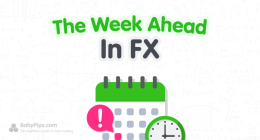
This time around, the federal government is expected to spend $50 million on marketing and outreach efforts, to let people know that low-cost coverage is available, according to the Centers for Medicare and Medicaid Services, which administers HealthCare.gov. The Trump administration had cut advertising for the marketplace by 90 percent.
Feb. 5, 2021, 8:25 a.m. ET
“Outreach efforts will include considerable awareness-building efforts” to encourage the uninsured to go to HealthCare.gov and enroll, according to a statement from the health care agency.
In addition to people who lack insurance, the open enrollment period is expected to apply to people who have A.C.A. coverage but want to switch plans, Ms. Cox said.
The Affordable Care Act, also known as Obamacare, provided for the sale of subsidized, private health insurance plans through federal and state marketplaces for people without job-based insurance. The 2010 law also expanded eligibility for Medicaid in many states. The law protects people with pre-existing conditions from being excluded from coverage, and requires health plans to provide certain essential coverage like preventive care.
The Supreme Court is weighing a Republican-backed legal challenge to the Affordable Care Act. A ruling is expected by June. But in oral arguments in the case in November, a majority of the justices indicated that they would reject attempts to kill the law.
Here are questions and answers about the special open enrollment period:
Where can I get help choosing a health plan?
Visit HealthCare.gov and click on “find local help.” This will list approved brokers and “assisters” who are authorized to guide consumers in selecting coverage. (Or call 800-318-2596.) Starting with trained helpers will steer shoppers clear of “junk” plans that may not provide all the care required by Obamacare plans, Ms. Packard said.
“If a plan looks too good to be true, be skeptical,” she said.
She urged shoppers to consider costs beyond the monthly premium, especially if family members have chronic health conditions like diabetes. “Human nature is to pick the cheapest one,” she said. But lower monthly premiums typically mean higher out-of-pocket costs, which can add up if someone needs regular medication and treatments.
Source: | This article originally belongs to Nytimes.com








